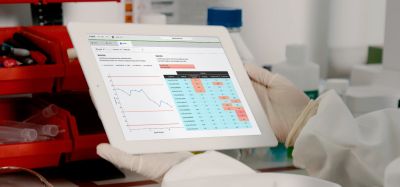Compulsory licenses in Germany: a tool for licensing negotiations?
Posted: 8 March 2019 | Christof Hohne | No comments yet
The Merck v. Shionogi case of 2017 laid the groundwork for further establishing compulsory licensing as a strategic tool in Germany, particularly in pharma patent litigation. A recent decision in a proceeding brought by Sanofi now provides more guidance on the threshold for obtaining such a compulsory license. This article will analyse the current state of play regarding the individual requisites for obtaining a compulsory license and the impact this could have on licensing discussions.1


In Germany, compulsory licenses are governed by Sec. 24 German Patent Law, which, in a nutshell, requires that the license seeker demonstrates the following:
- That he has, for an adequate time period, unsuccessfully engaged in licensing discussions with the patentee to use the patent under appropriate commercial terms, and
- That public interest warrants issuing a compulsory license.
The Federal Patent Court deals with these cases on the merits. If an infringement action is co-pending before a Regional Court and time is of the essence in view of an injunction risk, then the court can, upon request and pending proceedings on the merits, take a decision on allowing use by way of a preliminary order (Sec. 85 German Patent Law).
In any case, a compulsory license does not mean use is for free; an adequate royalty is owed, which is customary to commercial practice. This royalty is – if in dispute among the parties – decided customarily on the merits before the Federal Patent Court. This is determined based on an estimate by the court, which considers the pleadings of the parties.
Before the Merck v. Shionogi case was decided, compulsory licenses were an absolute exception, as the second criterion identified above, public interest, was considered hard to meet.
Public interest requires a balance of the convenience of the patentee’s interest versus that of the public in the availability of a specific product. This exemplifies the collision of the exclusive rights of the patentee (reward theory) for his invention versus the interests of the public in general. There is particular danger of this clash occurring given that the patentee is not required to practice his own invention. Under the established principles, a compulsory license cannot be awarded if public interest can be satisfied by a similar substitute product.2
In the Merck v. Shionogi case, both the Federal Patent Court3 and the Federal Court of Justice4 considered that the fact pattern in discussion established public interest, not least because no such similar substitute product was available:


The Merck v. Shionogi case
The key facts underlying the Merck v. Shionogi decision were as follows: Merck was marketing the HIV medication Isentress,® which contains the substance raltegravir.
Raltegravir is believed to inhibit spread of the HI-Virus, with particular advantages in terms of reduced side effects. It was considered particularly relevant to infants, young children, pregnant women, newly infected and long-term patients that are resistant to other therapies. Shionogi had a patent covering the antiviral agent raltegravir.
Shionogi made Merck aware of potential infringement and consequently licensing discussions commenced. In the course of these negotiations, which lasted for about one year, several offers were discussed but no license was concluded. At the time of licensing discussions, no other raltegravir products for these individuals was on the market.
As licensing talks failed, Shionogi sued Merck in Germany for patent infringement. In this context, Merck requested a compulsory license before the Federal Patent Court in proceedings on the merits and, in parallel, requested an order allowing preliminary use.
Both the Federal Patent Court and, on appeal, the Federal Court of Justice held in these preliminary proceedings that, for lack of an adequate substitute drug and a risk of switching therapies for some patients, public interest was met. This means that preliminary use, pending the outcome of the proceedings on the merits, was allowed as several individuals were at risk (ie, pregnant women, infants, young children, newly infected and long-term patients).
A key question was precisely what scope the right to use should have; ie, if the commercially available raltegravir products could be restricted to use for specific patient groups. As it turned out, this was particularly complex:
“In view of a multitude of factors, which – each individually – decide if a certain patient in his individual situation requires raltegravir or not is not a criteria that can establish “in advance” a specific group of patients (…). This does not allow for limiting the patient group. Already, for that reason, a limitation of the right to use for a life-saving drug is not possible.”
(decision 3 LiQ/16, GRUR 2017, 373, 382 at nr. 127)
Accordingly, specific restrictions were not imposed. However, in the case at hand, the right to use was limited to products already on the market (excluding others without market approval).
Interestingly, the Shionogi patent at issue was already under opposition while the proceedings took place and was subsequently revoked in its entirety by the Board of Appeals of the European Patent Office.
The Merck v. Shionogi case thus also answered a further important question: are royalties owed for use of a patent that is nullified with retroactive effect?
The Federal Patent Court took its chosen approach with a view to license contracts. It focused on the exclusive position afforded to the licensee, in a nutshell requiring payment of royalties if the licensee had enjoyed a more-or-less exclusive position on the market. This was found to have been the case.
In its published decision,5 the Federal Patent Court held that a royalty should always be subject to the specific issues of the case. In the case at hand, several factors played a role, including the deterring effect of the patent and the contribution ratio of the patent to developing the substance at issue.
Overall, the Federal Patent Court held in its decision (decision of November 21, 2017, 3 Li 1/16), that a royalty rate of four percent of the net sales price of the product was due for the time of allowed preliminary use until ultimate revocation of the patent. This decision can be appealed.
The German patent community has closely observed this decision and seen that compulsory licenses could be a weapon of choice in appropriate cases, particularly where an argument of a life-saving drug can be made.
The Sanofi v. Amgen case
The Sanofi v. Amgen case6 sheds more light on the above-mentioned criteria for obtaining a compulsory license. Sanofi was sued by Amgen in Germany for alleged infringement of its patent by the product Praluent® containing the active ingredient Alirocumab (monoclonal-antibody) for treatment of hypercholesterolaemia.
In the context of this litigation, Sanofi requested a compulsory license from the Federal Patent Court in proceedings on the merits and a preliminary right to use. The request for a license was sent to the patentee just a few weeks before commencing the compulsory licensing proceedings before the Federal Patent Court.
In its decision of 6 September 2018,7 the Federal Patent Court first took issue with the license seekers’ demonstration that talks over licensing had gone on for an adequate period of time. The Federal Patent Court considered that filing such a request just a few weeks prior to filing proceedings before the Federal Patent Court was too short a time.
This, in particular, applied as the co-pending and previously stayed infringement litigation had just been resumed so that respective steps could have been taken earlier. Also, a study relied upon to demonstrate public interest by the license seeker was available for several months so that, in view of the Court, the request for a license could have been filed earlier.8
The Federal Patent Court also took issue with the demonstration of public interest. In this regard, it considered that Sanofi had not sufficiently demonstrated that its product was different to other available products. In particular, this applied difference to the patentee’s product, in terms of specific therapeutic benefits, was not considered to have been established. This decision can be appealed.
Conclusion
When looking closely at the above case law, it becomes clear that compulsory licenses have advantages and disadvantages for both parties. The license seeker knows that if licensing talks fail after an adequate time, he inter alia bears the burden of proof for establishing public interest in compulsory licensing proceedings. The patentee, on the other hand, could inter alia be faced with the risk of having to allow a potential competitor to use his patent in a broad scope with no limitations as to, for example, patient groups. Against this background, just the knowledge of the potential availability of compulsory licenses, their requisites and uncertainties could have an impact on licensing negotiations involving life-saving pharmaceuticals. This could have the psychological effect that – in appropriate cases – a license will be negotiated.
Author biography


References
- The present article represents the personal view of the author
- Decision of 5 December 1995; GRUR 1996, 190, 192 f. – Polyferon.
- Decision of 31 August 2016; 3 LiQ 1/16, GRUR 2017, 373 – Isentress. https://www.aerzteblatt.de/nachrichten/70301/Bundespatentgericht-erteilt-Zwangslizenz-fuer-HIV-Wirkstoff.
- Decision of 11 July 2017; X ZB 2/17, GRUR 2017, 1017 – Raltegravir.
- Decision of 21 November 2017; 3 Li 6/16, GRUR 2018, 803 – Isentress II.
- Decision of 6 September 2018; 3 LiQ 1/18 – cf. also Press release of Federal Patent Court: https://www.bundespatentgericht.de/cms/index.php?option=com_content&view=article&id=163%3A2018-09-07-10-23-25&catid=9%3Apressemitteilungen&Itemid=79&lang=de; https://www.juve.de/nachrichten/verfahren/2018/09/keine-zwangslizenz-amgen-wehrt-sich-mit-bardehle-erfolgreich-gegen-sanofi.
- Decision of 7 September 2018; 3 LiQ 1/18 – cf. also Press release of Federal Patent Court:
- https://www.bundespatentgericht.de/cms/index.php?option=com_content&view=article&id=163%3A2018-09-07-10-23-25&catid=9%3Apressemitteilungen&Itemid=79&lang=de









